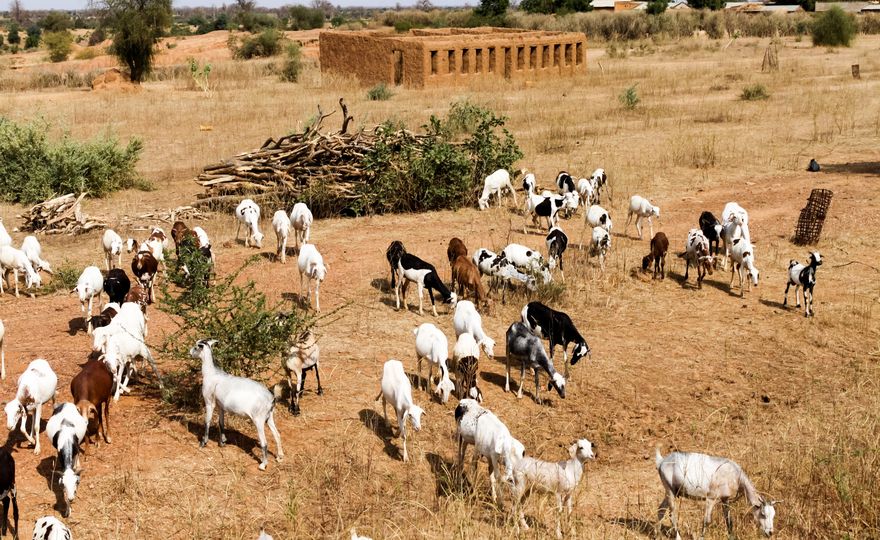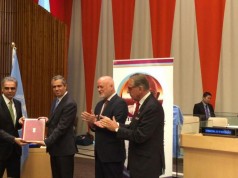
PIK-POTSDAM: Climate change could turn one of Africa’s driest regions into a very wet one by suddenly switching on a Monsoon circulation. For the first time, scientists find evidence in computer simulations for a possible abrupt change to heavy seasonal rainfall in the Sahel, a region that so far has been characterized by extreme dryness. They detect a self-amplifying mechanism which might kick-in beyond 1.5-2 degrees Celsius of global warming – which happens to be the limit for global temperature rise set in the Paris Climate Agreement. Although crossing this new tipping point is potentially beneficial, the change could be so big, it would be a major adaptation challenge for an already troubled region.
“More rain in a dry region can be good news,” says lead-author Jacob Schewe from the Potsdam Institute for Climate Impact Research (PIK). “Climate change due to greenhouse gases from burning fossil fuels really has the power to shake things up. It is driving risks for crop yields in many regions and generally increases dangerous weather extremes around the globe, yet in the dry Sahel there seems to be a chance that further warming might indeed enhance water availability for farming and grazing.” Co-author Anders Levermann from PIK and Columbia University’s Lamont-Doherty Earth Observatory adds: “We don’t know what the impacts on the ground will be, this is beyond the scope of our study; but imagine the chance of a greening Sahel. Still, the sheer size of the possible change is mind-boggling – this is one of the very few elements in the Earth system that we might witness tipping soon. Once the temperature approaches the threshold, the rainfall regime could shift within just a few years.”
Regions like the central parts of Mali, Niger, and Chad – which are practically part of the Sahara desert – could receive as much rainfall as is today registered in central Nigeria or northern Cameroon which boast a richly vegetated tropical climate.
A new tipping element in the climate system
Dozens of cutting-edge climate computer simulation systems indicate, on average, a weak wet trend for the Sahel under unabated climate change, so it is well known that there will likely be some more rain in the region in a warming world. The scientists now took a closer look at those simulations that show the greatest increase, plus 40 to plus 300 percent more rain, while others show only a mild increase or even slight decreases. They find that in these wet simulations, as the surrounding oceans warm, Sahel rainfall increases suddenly and substantially. During the same time the monsoon winds that blow from the Atlantic ocean to the continental interior get stronger and extend northwards. This is reminiscent of periods in earth’s history during which, according to paleoclimatic findings, African and Asian monsoon systems alternated between wet and dry, sometimes quite abruptly.
The scientists previously identified a self-amplifying mechanism behind the sudden rainfall changes. When the ocean surface temperature increases, more water is evaporated. The moist air drifts onto land, where the water is released. When water vapor turns into rain, heat gets released. This increases the temperature difference between the generally cooler ocean and the warmer landmasses, sucking more moist winds into the continent’s interior. This again will produce more rain, and so on. “Temperatures have to rise beyond a certain point to start this process,” explains Schewe. “We find that the threshold for this ‘Sahel monsoon’ is remarkably similar across different models. It seems to be a robust finding.”
Huge adaptation challenge for an already troubled region
“The enormous change that we might see would clearly pose a huge adaptation challenge to the Sahel,” says Levermann. “From Mauritania and Mali in the West to Sudan and Eritrea in the East, more than 100 million people are potentially affected that already now are confronted with a multifold of instabilities, including war. Particularly in the transition period between the dry climatic conditions of today and the conceivably much wetter conditions at the end of our century, the Sahel might experience years of hard-to-handle variability between drought and flood. Obviously, agriculture and infrastructure will have to meet this challenge. As great as it hopefully were for the dry Sahel to have so much more rain,” concludes Levermann, “the dimension of the change calls for urgent attention.”

















